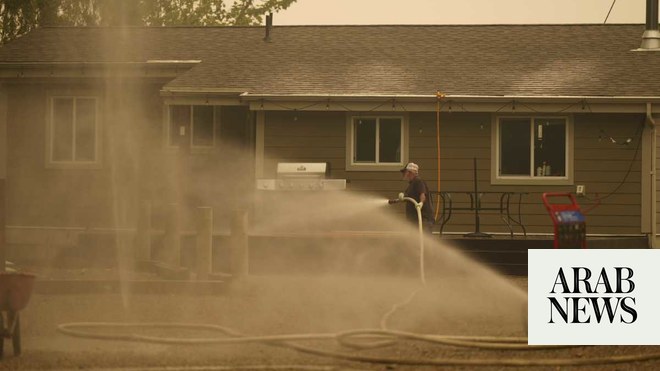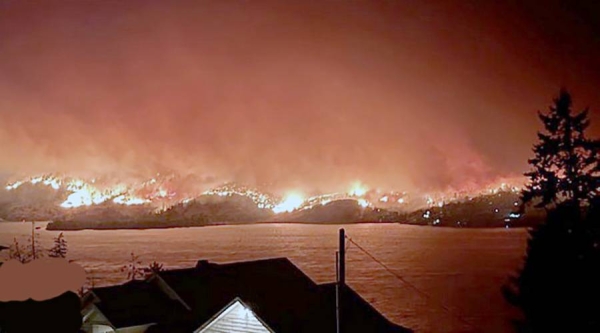
On the heels of an unprecedented heatwave that left hundreds dead in British Columbia, Canada’s westernmost province is now battling a fresh threat.
More than 100 wildfires are burning across the province, as of late on Thursday, 86 of which started in the past two days. Evacuation orders and alerts have gone out in a dozen communities. The province’s premier, John Horgan, suggested that the crisis could become dire enough to see the Canadian military deployed.
There was a similar picture in the US west. Hundreds of firefighters battled in high heat against several wildfires in the forests of far northern California, where the flames have already forced many communities to evacuate.
Mount Shasta, the volcano that towers over the region, was shrouded on Thursday in a haze of smoke plumes so huge they could easily be seen in images from weather satellites in space.
In British Columbia, it was supposed to be a week of tentative celebration – Thursday was the day that the province’s Covid-19 state of emergency was lifted. But now the province is likely to be facing a new state of emergency over the wildfires.
“Absolutely, we may well, depending on how the fire season starts to unfold require a provincial state of emergency such as we have seen in our past five seasons in this province,” the province’s public safety minister, Mike Farnworth, said.
In the tiny village of Lytton, where a wildfire struck with such fury that residents had mere minutes to evacuate, an unknown number of residents were still unaccounted for on Friday. Community Facebook groups were brimming with posts by residents desperate to track down their missing loved ones.
The Vancouver Sun reported at least two people died attempting to shelter in a hole in the ground as the fire raged.
In the days leading up to the fire itself, Lytton set national heat records for three days straight until Tuesday, when the mercury reached a hellish 49.5C (121.1F), baking virtually all moisture from the region.
Horgan said “anecdotal” reports suggested the fire may have been ignited by an errant spark cast by a freight train into tinder-dry grass near the town. However, he cautioned that a formal investigation would be needed to determine the precise cause.
The Lytton inferno and the heatwave that preceded it are the result of a so-called “heat dome” – a weather phenomenon where a ridge of high pressure traps and compresses warm air, driving up temperatures and baking the region. While not unheard of, climate scientists say heat domes like this will become more common and more intense because of climate change.
British Columbia’s chief coroner, Lisa Lapointe, said her office received reports of at least 486 “sudden and unexpected deaths” between June 25 and Wednesday. Normally, she said about 165 people would die in the province over a five-day period.
Thanks to British Colombia’s usually moderate climate, many homes do not have air conditioning. When thermometers soared, those who could escaped to the beaches and ice-cold mountain creeks nearby to seek relief.
Many of those who couldn’t were forced indoors, seeking shelter in city-run cooling stations, at sprinklers and water misters set up around town, even resorting to sleeping in wet T-shirts.
In downtown Vancouver, many of the city’s most marginalised communities have borne the brunt of the heatwave’s wrath in sweltering single-room-occupancy hotels and other social housing, or gathering in alleys and doorways, seeking any shade they could find.
Community activist Angel Gates said that while she had her own air conditioning unit to keep her and her friends cool, most of the building did not. “It was just so hot,” she said. “There were ambulances coming all the time.”
At Vancouver’s Overdose Prevention Society, a supervised drug consumption site in the city’s downtown core, manager Trey Helton said workers went through 14 cases of bottled water in a three-hour period. “We had a lot of people passing out from heat exhaustion, trying to get them into the shade and basically just a lot of 911 calls,” Helton said.












